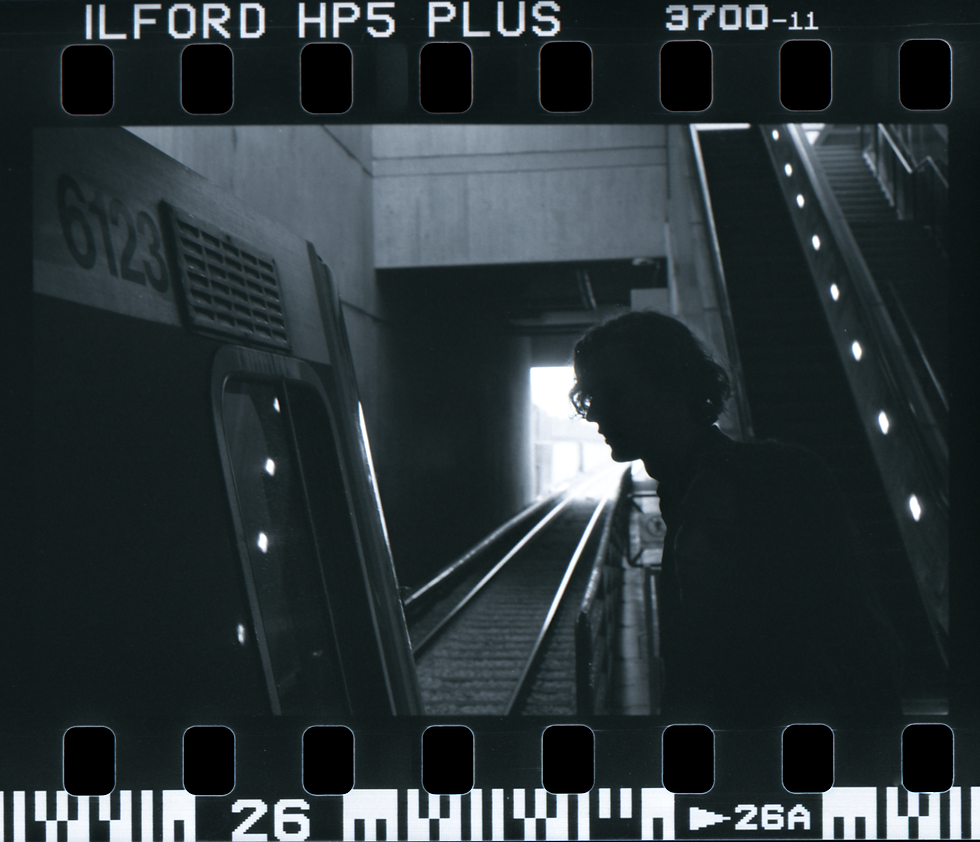35mm > Medium Format
- Brett Parsons
- Apr 19, 2021
- 4 min read
Updated: Jan 14, 2022
A more-or-less controversial take that goes against the age-old adage "bigger is better". I have been shooting medium format for some time now and I can't deny it has expanded my love for film photography and increased my knowledge and ability in film. Furthermore, as I have added more medium format cameras to my collection (see my previous article to see which cameras I am talking about My Film Camera Collection) I find myself leaning more and more toward shooting 35mm.

The above figure is from the darkroom. They also have a great film index for those looking into discovering or trying new types of film.
While there are numerous reasons to choose a particular format, below are attributes that have me leaning towards 35mm over 120mm more often than not. Disclaimer, I love medium format and shoot it a good bit. However, this article is in response to the increasing notion that medium format is always better if one is able to shoot it or that one must shoot medium format for true professional prowess.
Resolution Issue
I want to get this topic out of the way first as it is the main proponent to shoot 120 film. Even 645 medium format is ~2.7x the size of a 35mm negative. There is no hiding the improvement in the negative. The resolution medium format provides is incredible and can be the basis for large-scale prints. But rarely am I, or other film photographers I know, transferring their work into physical, large-scale prints. Rather, today's photographers focus on online galleries, social media, or photo-journalism. Now quite obviously I am generalizing and truly medium format has a justified place. But for printing your work, through the rescanning of 35mm, you can produce extremely detailed scans that are fit for 95% of printing. I use an Epson v600 scanner and have achieved great results for enlarged scans. Below is an example.

Original scan from lab (png / 1545 x 1024 / 72 ppi)

Rescan at a smaller size just to show the rescan.

Full rescan by Epson v600 cropped to the same size as the first image that was received from the lab. The full image is 5139x4323 at 150 ppi which means the image is 34.26 in. x28.82 in. This scan was not even at the highest detail that the v600 was capable of. So unless you're doing an incredibly massive print, a 35mm negative can scan rather large. Large enough for any website usage or print.
Quality and Pop
The second reason one might shoot medium format is the allured pop of medium format. This is something I actually quite agree with. A medium format camera, an 80mm lens, and a good film can produce some of the most unique and resilient photos, most importantly portraits. Though a quality 35mm, a nice low aperture 50mm lens (the 35mm equivalent to a medium format 80mm. read more about lens relationships here), and a good film is its near equal. So I do concede that for professional portraits, I recommend medium format, but I shoot more street and landscape photography and 35mm is more than capable for that.

Portrait taken with a Mamiya 645E camera and an 80mm lens.
Cost and Quantity
Perhaps the shortest point to make. With the rising cost of film, cost factors into this equation as well. With 35mm providing 36 shots per roll and medium format allowing for anywhere from 8-15, there's a vast cost difference per shot. A 35mm Portra 400 roll and a 120mm Portra 400 roll are valued at approximately $10 and $9 respectively. At this estimate, you are paying $0.28 per 35mm shot and roughly $0.60-$1.13 per shot for 120mm. So it costs ~2-4x more per shot for medium format. The cheaper cost of 35mm not only allows for more shots but gives the opportunity to bracket shots to ensure you perfectly capture that one image you have been really wanting.
Portability & Camera Build
This is the overarching reason I end up shooting 35mm more than anything else (including other formats such as super 8). Even though landscape photography is practically medium format's main use, when you're hiking 10+ miles in either high heat, high altitude, or large elevation deltas, carrying big, heavy, expensive and oftentimes fragile medium format cameras can prove hazardous, exhaustive, or uncomfortable. Especially when you are also carrying water and other supplies. I do fear breaking my medium format camera sometimes when on particularly strenuous hikes. A lot of medium format cameras tend to be more fragile and more finicky than 35mm cameras. More and more I find myself reaching for the old faithful Canon AE-1 for landscape photography. It's lighter, more durable, and less expensive.
Conclusion
Obviously, I don't aim to flatten enthusiasm for a great avenue of film photography, I merely wish to add some perspective to what can be an over-glorified vision of medium format. It is a perhaps controversial take, but just reevaluate your gear and think about what is truly the best equipment for the shot you wish to capture.
Comments